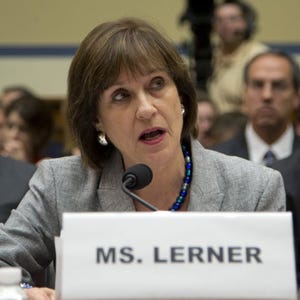Imagine what Congress does NOT know and then imagine what we, don’t know. Terrifying right?
Mr. Obama, don’t let secrecy be your legacy: Republican chairmen
USAToday: When President Obama took office, he vowed to run “the most transparent administration in history.” As his presidency draws to an end, those words would be laughable if the issue were not so serious.
At nearly every turn, this administration has blocked public disclosure and ignored almost every law intended to ensure open and accountable government.
Hillary Clinton’s private email server is just the latest, most public example. Numerous other incidents involve the concealment of documents, providing only partial information, slow-walking congressional requests and using private email accounts and secret meetings to avoid official records-keeping laws. These sorts of tactics have become common practice for this administration.
The most brazen examples occasionally get media attention: Former Environmental Protection Agency (EPA) Administrator Lisa Jackson created a fictitious email address under the alias name “Richard Windsor,” hiding official actions from public scrutiny. But more typically, the pervasive stonewalling does not make headlines.
Congress isn’t alone on the Obama administration’s enemies list. According to an analysis of federal data by the Associated Press (AP), the Obama administration set new records two years in a row for denying the media access to government files. According to the AP, “The government took longer to turn over files when it provided any, said more regularly that it couldn’t find documents and refused a record number of times to turn over files.”
Moreover, in an unprecedented letter to several congressional committees, 47 inspectors general, who are the official watchdogs of federal agencies, complained that the Justice Department, EPA and others consistently obstruct their work by blocking or delaying access to critical information. Worse yet, the White House and Secretary Clinton refused to install an Inspector General during her tenure at the State Department.
It is the job of Congress and our agency watchdogs to ensure the federal government is efficient, effective and accountable to the American people. But time and time again, this administration has dismissed Americans’ right to know.
When Department of Veterans Affairs bureaucrats place themselves ahead of the veterans they are charged with serving, it’s Congress’ job to get answers. But VA’s stonewall tactics are interfering with this vital task. It’s been more than 18 months since the House Committee on Veterans’ Affairs revealed VA’s delays in care crisis to the nation, yet the department is sitting on more than 140 requests for information from the committee regarding everything from patient wait times to disciplinary actions for failed employees. VA’s disregard for congressional oversight was on full display Oct. 21, when committee Democrats and Republicans voted unanimously to subpoena five bureaucrats VA had refused to make available to explain their role in a scheme that resulted in the misuse of more than $400,000 in taxpayer money. Later, at a Nov. 2 follow-up hearing, two of the subpoenaed VA employees invoked their Fifth Amendment right against self-incrimination.
When the Internal Revenue Service improperly targets conservative organizations, it’s Congress’ job to get answers. When the Bureau of Alcohol, Tobacco, Firearms and Explosives runs a failed and flawed sting operation intentionally providing hundreds of firearms to Mexican cartels, it’s Congress’ job to get answers. When events surrounding terrorist attacks in Benghazi on the anniversary of 9/11 are hidden from the public, it’s Congress’ job to get answers.
But Congress cannot do its job when an administration refuses to turn over information. That’s why Congress has increasingly resorted to the power of the pen and has issued numerous legally-binding subpoenas to various Obama Administration agencies, including the Department of Justice, the State Department, the Treasury Department, the Department of Homeland Security, the Federal Reserve Board, the Federal Reserve Bank of New York, the Environmental Protection Agency, the National Oceanic and Atmospheric Administration and the Office of Management and Budget, among others.
Whether it is the necessity of holding agency heads in contempt of Congress or pursuing civil litigation to gain access to clearly relevant material or the improper invocation of executive privilege or a new “confidential communications” privilege this administration made up out of whole cloth, Congress has been forced to spend far too much time and resources gaining access to documents which it is clearly entitled to.
But perhaps the honor of the least transparent agency in the federal government belongs to the EPA.
Everyone wants clean air and water. But Americans want environmental regulations to be based on sound science, not science fiction or radical political manifestos. When the EPA refused to release the data it uses to justify its proposed air regulations, the historically bipartisan House Science Committee was compelled to issue its first subpoena in 21 years to retrieve the information.
Last year, the House passed the Secret Science Reform Act of 2015 to require the EPA to base its regulations on publicly-available data, not secret science. This allows independent scientists the opportunity to evaluate EPA’s claims and check their work. Who could argue against using open and transparent science to support regulation? Answer: the Obama administration.
It’s not surprising that the non-partisan Center for Effective Government gave the EPA a grade of “D” in its most recent report for poor performance in providing access to information.
This administration has created an unprecedented culture of secrecy that starts at the top and extends into almost every agency. While Congress is being thwarted in its efforts at oversight, it is really the American people who lose when those entrusted to enforce the law believe and act as if they are above it. It’s time to come clean, Mr. President. Don’t let a lack of transparency be your legacy.

